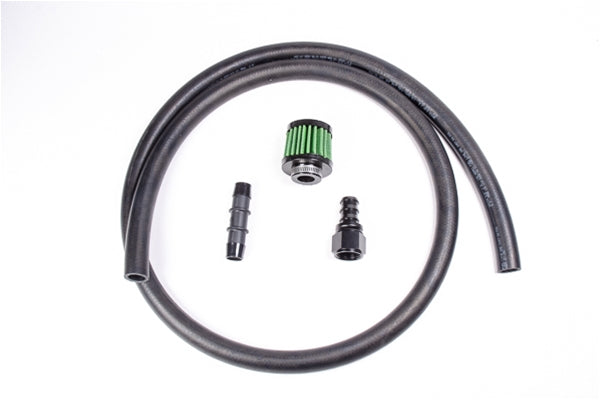Radium Engineering Fuel Cell Vent Kits
Radium Engineering Fuel Cell Vent Kits
Couldn't load pickup availability
Radium Engineering Fuel Cell Vent Kits
The vent permits air to escape as the fuel cell is filled and permits filtered air to enter when fuel is getting consumed. This allows the tank to breath to avoid pressurization during normal operation.
20-0484-08 Fuel Cell Vent Kit, 8AN
This kit is typically used for standard-fill systems with direct fill or remote fill necks. It includes an air filter, 1/2" fuel vent hose, and adapter fittings. The kit requires an 8AN male vent fitting.
NOTE: This can be used with the standard vent fitting that is included with the Radium FCST.
20-0484-12 Fuel Cell Vent Kit, 12AN
This high flow kit is typically used for quick-fill systems that commonly use a dry break and dump can. It includes an air filter, 3/4" fuel vent hose, and adapter fittings. The kit requires a 12AN male vent fitting.
NOTE: This can be used with Radium 20-0462 DSV, 12AN ORB to 12AN Male, Quick Fill.
20-0485 12AN Female Fitting to Air Filter
This is typically used with Radium 20-0535 DSV, 12AN ORB to 12AN Male, Quick Fill, Internal. It includes an air filter and a 12AN female adapter fitting. The kit requires a 12AN male vent fitting.
NOTE: Because the top of the fuel fill tube should not be higher than the location of this air filter, this is commonly used in conjunction with direct fuel cell fill caps only (not remote fillers).
20-0439 12AN ORB to 5-Bolt SAE Adapter
This adapter is commonly used with old FCST units (20-014X-XX) which had a small vent. It converts the fuel level flange to a large 12AN ORB vent.
NOTE: a fuel level sender cannot be used with this adapter in place.
Important steps to properly route the vent line and prevent unwanted fuel loss:
1. From the fuel cell, the hose must first run upwards allowing any fuel captured in the vent line to drain back down into the cell.
2. After ascending vertically, the line should briefly route towards the front of the vehicle to prevent fuel from sloshing out.
3. Vertical loops should be added to act as a "make-shift" expansion chamber. This allows air to escape and any fuel to drop to the bottom of the loops.
4. Depending on the application, the overall vertical height of the vent hose should be at least 12".
5. For remote fuel fill applications, the vertical loops must be higher than the fill point.
6. The vent hose should terminate outside of the cabin, below and behind the fuel cell and away from the exhaust system.
7. Utilizing an expansion chamber that is larger than the vent hose diameter will further aid in preventing liquid fuel from escaping (see Radium 20-0462).





